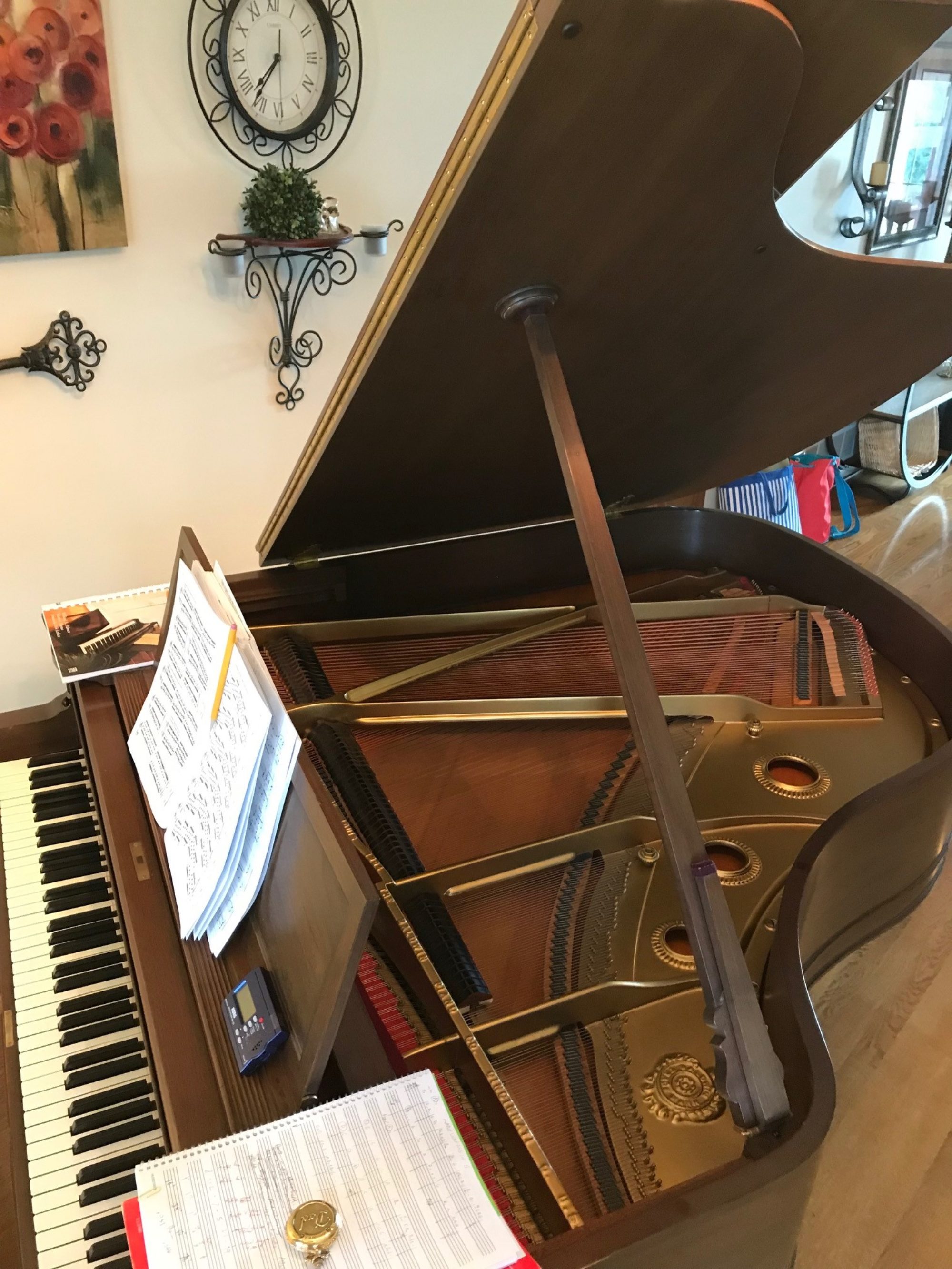For more information about Better Music’s piano services, please see our homepage at :
Better Music Piano Tuning, LLC
Walter Bagnall RPT
740-466-9523
Your piano will hold tune better if you are able to keep the Relative Humidity (RH) inside your home between 40% and 60% at all times year round.
HUMIDITY AND YOUR PIANO
In many Ohio homes and other facilities, the relative humidity (RH) dips to dangerously low (for the piano) levels in the winter months of December through early March. In the summer months there may be problems with high RH. Since the RH in a home may differ greatly from the RH outside, many homeowners are unaware of the RH inside. I often give an inexpensive hygrometer (humidity meter) to help diagnose interior humidity problems, and I will be glad to work with you to recommend an appropriate and affordable course of action.
Correcting for humidity extremes in your home (high or low) is good for all concerned; the health of your family, children, grandchildren, (pets too!), and good for your violin and other acoustic instruments. Keeping RH between 40% and 60% in your home inhibits transmission of some respiratory diseases like COVID. Plus you get more mileage out of your piano tuning and are generally happier with your music making. A win-win for everyone!
Untreated high or low humidity causes lots of problems for pianos. Unstable tuning, sluggish keys, unstable regulation and damaged finish and veneer are but a few of the problems you may experience. If your piano goes out of tune significantly as the seasons change, or if keys tend to stick or to be sluggish, begin to monitor the RH in your home. If you see extended periods of time in which the humidity is below 40% (usually January and February), or above 60%, I recommend doing something to correct for these humidity extremes. A target of 45-50% is optimal. Some of the things we will consider or recommend may include:
- Step 1 is to have a hygrometer (humidity meter) so you can monitor and be engaged in humidity self-awareness. There are several types of meters available, both electronic and battery-free. A good one to get is an electronic hygrometer which shows the minimum and maximum RH over time in addition to the current RH. There are even some hygrometers available now (inexpensive, about $15-$20) which can, in bluetooth connection with a smartphone, log the RH level over time; extremely helpful in problem situations.
- Placement of the piano in relation to heat/cooling vents, windows, direct sunlight, drafty areas of the home and outside walls. CRITICAL – Do not place your piano directly on top of a heat vent. Avoid placement of living plants on or close to your piano.
- Type of heating and/or air conditioning in the home.
- Whole-house humidity control as part of the HVAC system. (Call an HVAC professional for this solution unless you are really handy working with ductwork, plumbing, etc.) A smart, programmable thermostat is very helpful, as often they track your interior humidity and can help identify problems.
- Use of room humidifier and/or dehumidifier of sufficient capacity for the room or house. It can take 1 or 2 gallons a day in many Ohio homes to keep the RH above 40% in January and February. These items can be purchased at a home improvement store or online. This solution works for many private homes, but is not likely to be effective in churches, schools, or other institutions. A room humidifier can be a bit of a hassle to maintain, so the homeowner has to be engaged and willing to spend 10-15 minutes every 3-4 days to keep water in it.
- Installation of Piano Life Saver system made by the Dampp-Chaser Company, for which I am a Certified Retailer. These units are made specifically for pianos (both upright and grands) and should be installed only by a professional piano technician. The cost of these units has gone up significantly in the post-COVID years, but they remain the final bastion against otherwise unsolvable humidity issues. These systems also require the homeowner to be humidity-conscious and engaged, as the water tank (best – distilled water w/Dampp-Chaser additive) must be filled whenever the light indicates the tank is empty (every week or so in the winter season).
A Common Misconception
There are many pianos which have a ‘heater bar’ which was installed in the ’80s or ’90s, plugged directly in the wall with no control unit. It is often mistakenly believed to be a ‘heater’ to be used in the winter. No! It isn’t a heater, it is a dehumidifier to be used only when the humidity is high (summertime). Using the dehumidifier bar only in the winter will dry out the piano too much and will cause damage to the wooden parts of the instrument. The best solution is to purchase the control unit (called a humidistat) which will automatically turn on the dehumidifier bar only when it is needed. Call me for an estimate.

Humidity control makes your piano happy!


740-466-9523
Piano Tuner
Registered Piano Technician
All expressions of opinion and all statements of supposed fact on this website are published on the authority of the author as listed, and are not to be regarded as expressing the view of the Piano Technicians Guild Inc. unless such statements or opinions have been adopted by the Piano Technicians Guild Inc.
